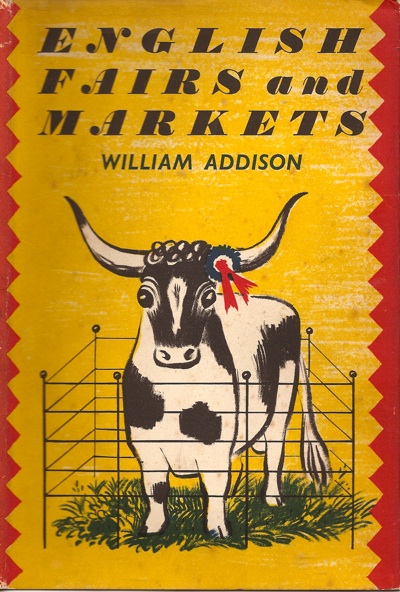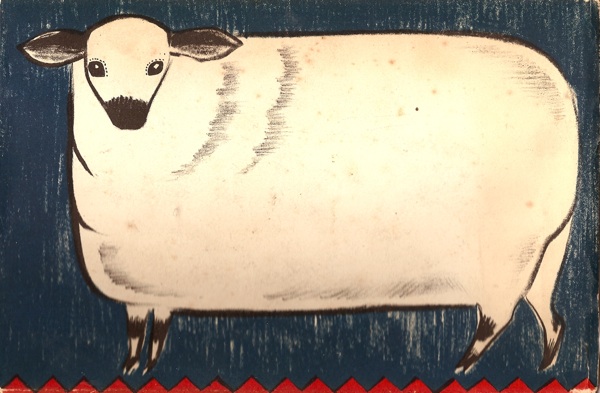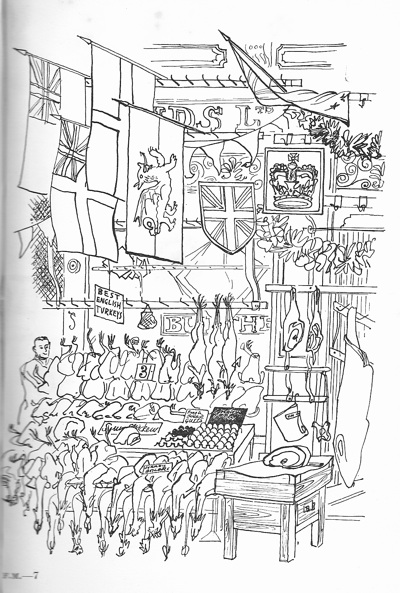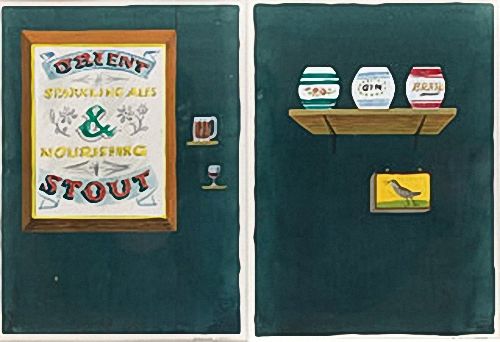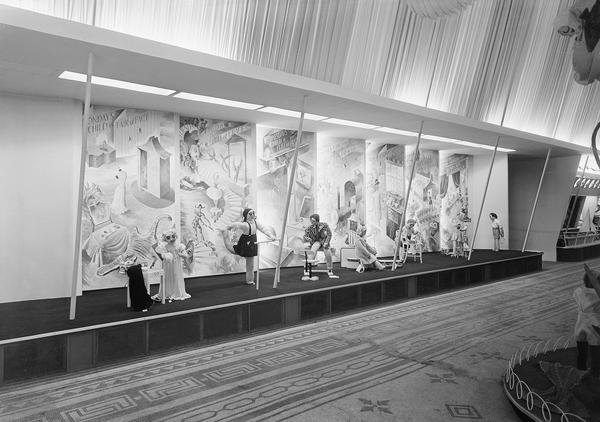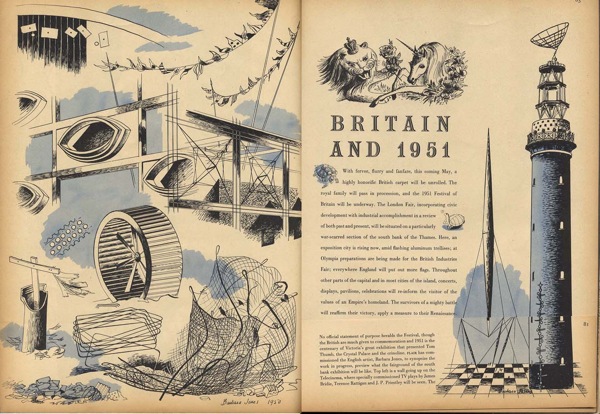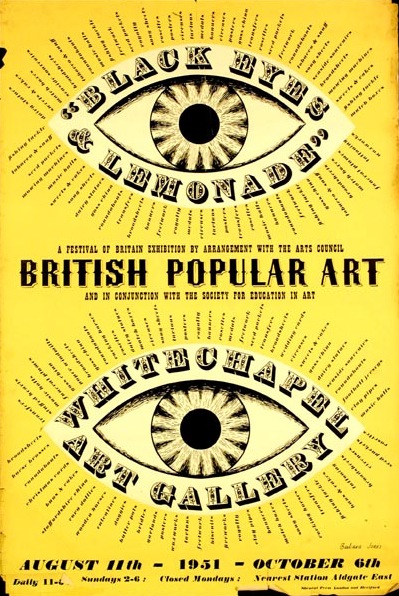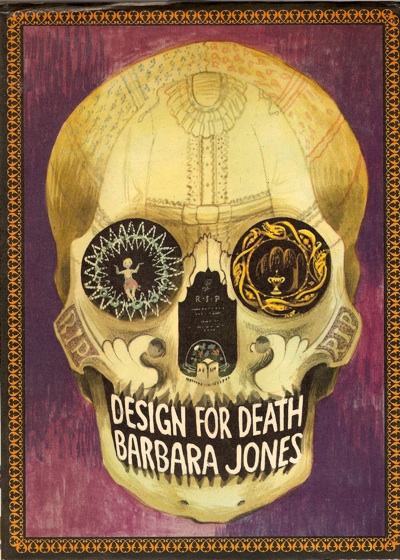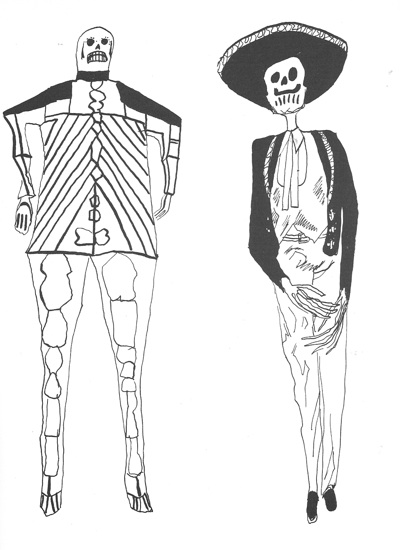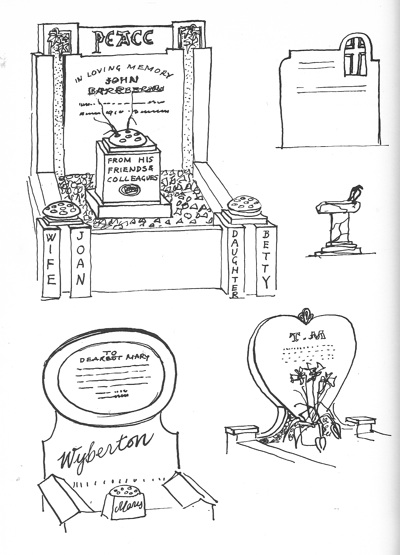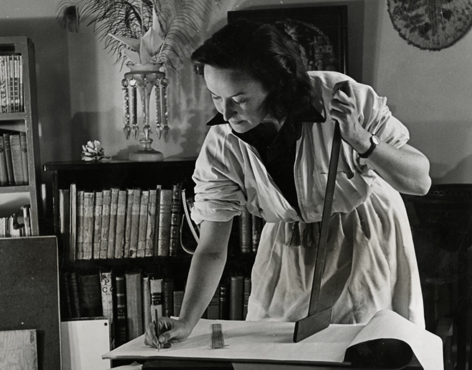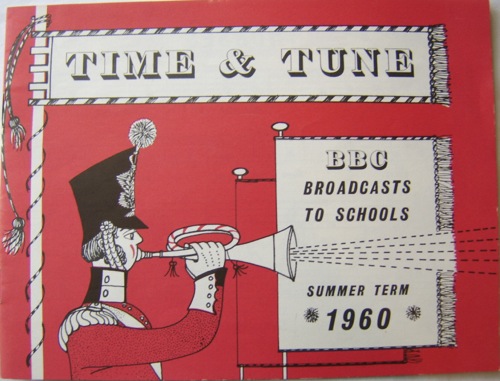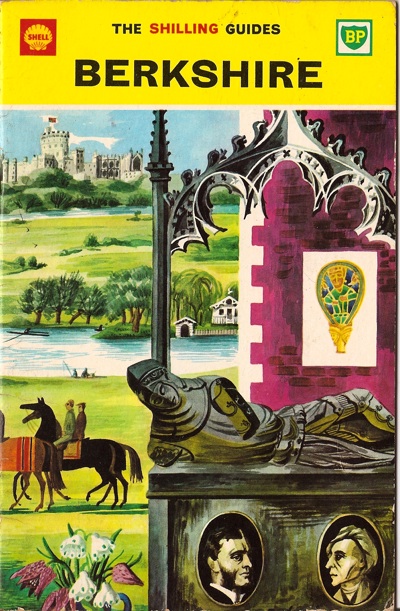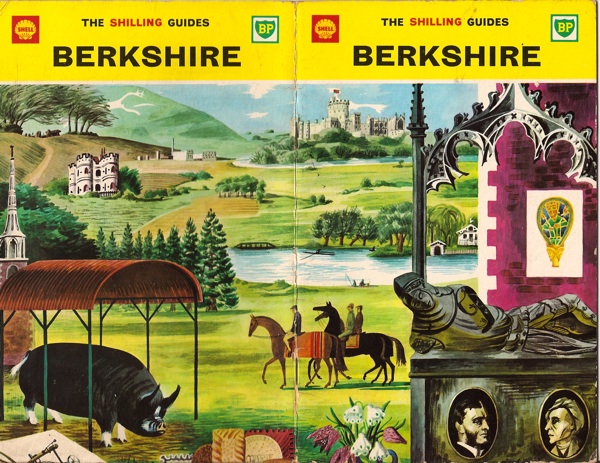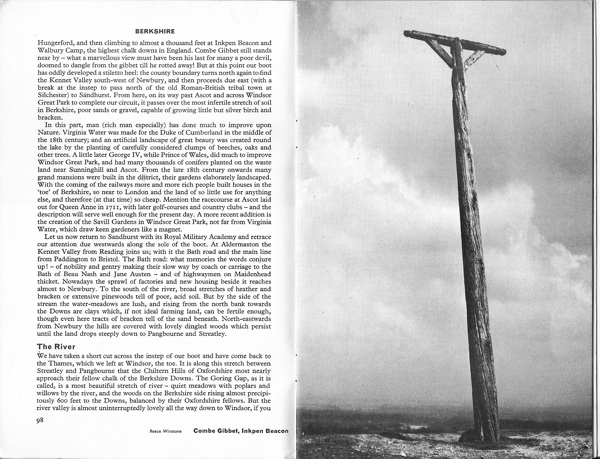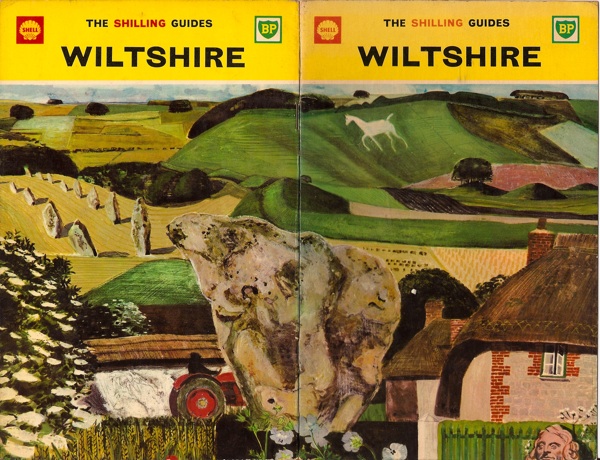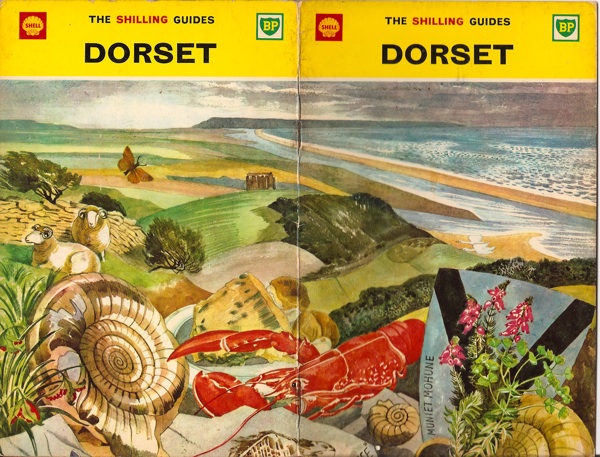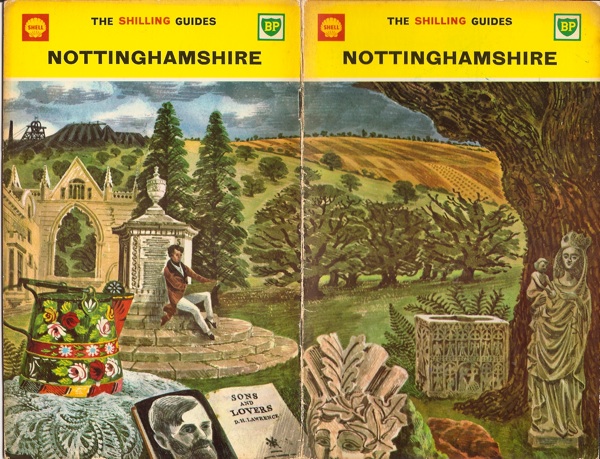Death, Sheep and Lemonade
I promised you Barbara Jones, and Barbara Jones you shall have. I’ve always liked her work, which began when we picked up this book in a second-hand shop quite a few years ago now.
Not only is it a very fetching cow, but it also reminds me of County Shows, which are some of my favourite things in the world. I’m off to the Bath and West later this week, and will be looking out for bemused-looking animals with rosettes in her honour. Here is the sheep from the back cover.
And one of the more delicate line drawings from the inside – this is Leadenhall Market decorated for the Coronation of Queen Elizabeth II.
But the more that I find out about her, the more I am discovering that the (very many) book covers and illustrations are just one part of what she did. Every biography I have found of her (on Wikipedia, or this rather good illustrated catalogue by Ash Rare Books) makes the point that the vast majority of her work was ephemeral and has disappeared. She studied mural design at the Royal College of Art, and her work appeared on liners – here is a sketch for a very ‘popular arts’ trompe l’oeil mural for the Tavern Bar of the S.S. Orsova.
as well as working for the 1947 Britain Can Make It exhibition.
A striking tableaux in the toys section illustrating the famous Birthday Nursery Rhyme, from monday’s child ‘fair of face’ sitting before a dressing-table, through the days of the week to Sunday’s child ‘blithe and bonny and good and gay’ rightly put in a glass case out of reach of an every-day little boy who resents such perfection. Murals by Barbara Jones, figures by Hugh Skillen.
She also designed murals for the Festival of Britain. None survive, but here are her illustrations of the Festival being built in 1950.
And, apparently, she also designed sets for The Woodentops. How much more influential can you be?
But even despite that, I think perhaps her most important legacy was in ways of seeing. The Festival of Britain poster which I posted a couple of weeks ago, was for an exhibition that she curated as well as designed.
And after I’d posted it, Mr Crownfolio came and plonked this on my desk (which had apparently been on the shelves all this time, unbeknownst to me).
She collected, wrote and illustrated the book in a rather wonderfully understated Gothic fashion.
While the book itself wanders over everything from Aboriginal mourning rituals to modern graves for pets, passing through poetry, floral tribute, anthropology and etiquette on the way. The result is a very modern kind of book, where the pictures are working alongside the words rather than just illustrating them – I can’t recommend it too highly.
But in terms of what she achieved with her work, the fly-leaf gives as good a description as any.
Before it was generally fashionable to enjoy the decorative and amusing objects produced by popular art, Barbara Jones was already studying them and collecting them, and she did much for them when she put on the exhibition called ‘Black Eyes and Lemonade’ during the Festival of Britain. Miss Jones’ house in Hampstead, full of curious and delightful things, is a vivid illustration of her impatience with the chastity of conventional ‘good taste’ and her feeling for invention, fantasy and vitality wherever it may be found.
I wonder what became of her house? They should have preserved it for the nation.
Do you think that’s it behind her?
Should you feel the need to campaign for something to be preserved though, the last remaining one of her murals has just been put forward for a listing order. It’s a mural of Adam and Eve done for a (Basil Spence -designed) secondary school in Sheffield. The school is being demolished, but the Twentieth Century Society are campaigning for the mural to be reused in the new school. I hope they succeed – more details here.
And if you want to know even more, there’s a book – A Snapper Up of Unconsidered Trifles: A Tribute to Barbara Jones which I haven’t read., but if it has more than three pictures in it will definitely be worth the price of admission.
Or, if you want the real deal, this is available from Books and Things. Take your pick.
